Whether it’s setting up your new kitchen or upgrading it to perfection, it takes a good amount of time to find the appliances. It becomes challenging to decide exactly where to start since the modern kitchen set-up consists of multiple big and small appliances. The online research can be overwhelming since you need to refer to different articles for different types of products. But we have come up with a solution for you. We will have an all-in-one comprehensive buying guide for all your kitchen appliances, no matter how big or small it is.
To simplify your kitchen set-up, let’s divide the different departments of the kitchen into different zones.
1. The preparation zone
Before getting to the real nitty-gritty of a kitchen, let’s look at the preparation zone first. These are the appliances that do the preliminary work before the cooking starts.
1.1. Mixer-Grinder
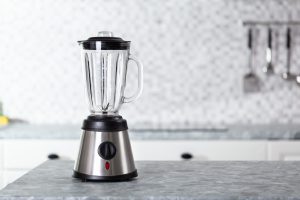
A mixer-grinder and a chopper are used to grind spices and cut the vegetables before we start the cooking. The way to buy a mixer-grinder depends upon how often you cook and what kind of curries and gravies you prepare.
Power
A mixer-grinder used in homes generally has a power range of 500W to 750W. Needless to say, the higher the wattage, the better the performance. But that doesn’t mean that the lower wattage models are not good enough. The higher wattage models are better at grinding tougher solid ingredients. So if your daily cooking requires grinding harder solid ingredients, go for a high wattage option, otherwise, the 500-600W mixer-grinder serves the purpose.
Speed
Another important factor that your mixer-grinder choice depends upon is the spin speed. The speed is measured in RPMs (Revolutions Per Minute). A general domestic use mixer-grinder has a speed of 18,000-23,000 RPMs. Although it may feel that the higher speeds perform better, but that is not the case. As a matter of fact, higher speeds are not effective when it comes to grinding spices and blending liquids. There generally is a knob to control the speed for the different types of blending or mixing requirements.
Number of jars and Blade
The number of jars you would need depends upon the level of cooking you do on a daily basis and the size of your family. A common household mixer-grinder comes with 2-3 jars. These jars come with different sizes and types of blades that are namely a wet grinding blade, a dry grinding blade, and a sauce (or chutney) blade. It is very important for you to check the blade type and the jar sizes before you buy your mixer. Some blenders also come with additional multipurpose blades like chopping blade, whisking blade, extraction blade, pounding blade, etc. All in all, the blade design and the number of jars play the most important role in your mixer-grinder buying process.
Warranty
Once you are done checking the features of a mixer-grinder, make sure to go through the warranty plans with it. Generally, a mixer has a good life and works for you for years, there might be some wear and tear in the machine or the blades after some time. At this point, you can choose to replace the damaged parts or the machine altogether.
1.2. Kettle
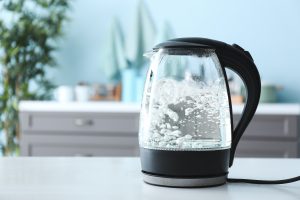
One of the simplest and most basic kitchen appliances is the electric kettle. It is easy to use device used to boil water for cooking, making soup, and hot beverages like tea and coffee and it reduces your workload. Just click a button, and you get the hot water at your service.
Price
A basic kettle would cost you as low as Rs.300-400, but if you want to go for the ones that let you control the temperature, you can get one within Rs.2,000.
Feature
Depending upon your need, you can choose from basic kettles and advanced feature kettles. There is a range of kettles that can be used to quickly boil eggs and milk. But don’t try to do this unless it is mentioned in the manual.
Speed
An electric kettle generally takes up to 3 to 4 minutes to get the water to boil. The high-end ones though can boil the water within as little as a minute. Most importantly, the electric kettle boils the water faster than your microwave or a cooktop kettle does.
Capacity
Generally, you get electric kettles of capacities ranging from 500ml to 2L. The ideal capacity would vary from person to person, but on average, a 1.5L kettle serves the purpose for a nuclear to mid-size family.
Safety
Are electric kettles safe? Well, yes. It’s always recommended to choose a quality device over one that is the cheapest option. The outer body in some cases tends to heat up, but that should not be a problem.
Energy Efficiency
Never forget to check the energy efficiency of the electric kettle before buying it. Believe it or not, an electric kettle uses up way lesser energy than that your induction stove or gas.
Note: If you use an electric kettle on a regular basis, make sure to clean it using vinegar or lemon juice to get rid of the accumulated minerals on the inner walls.
2. The cooking Zone
The basic setup has been completed. Let’s now move to the zone of the most important headlines of the kitchen, the cooking zone. It is impossible to set up a kitchen without having the cooking essentials like a cooktop, cooker, toaster, and different types of pans.
2.1. Stove
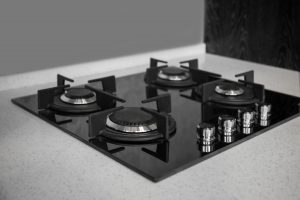
The stove or the cooktop is a kitchen essential without which the cooking cannot be performed in our country. The recent trends might show a little interest in the induction stove, but the traditional gas stoves still have the hearts of the majority of the population. Commonly known as the burner, can be of many types based on the number of burners, the style, the fuel type, dimensions, etc. Apart from this, your choice of the stove also depends upon the kitchen layout and available space to set up.
Kitchen Space
Before you buy a burner for your cooking requirements, calculate the space that is available in your kitchen. Make sure that the stove is not too big and doesn’t consume the entire space on the shelf since you need ample space to keep your ingredients around the stove when you are cooking. In general, a cooktop can be from 15 to 36 inches depending upon the number of burners and the design that we will discuss in a bit.
Type of burner
There are two major types of burners available: Standing Pilot and Sealed burners. Choosing from these options is more of a design choice rather than an operation choice. A standing pilot is the one that we have seen and used for years. A sealed burner style is more aesthetically pleasing as it is embedded in the shelf itself. Although the price difference is quite much between the two, people living in their own houses or apartment flats are preferring the sealed burners.
Note: The style of the burner has nothing to do with the performance.
Number of Burners
One of the most important aspects of your stove buying process is the number of burners you require. Stoves come with a minimum 1 burner and can have up to 10 burners, but for domestic use, the most popular ones are 2-5 burner stoves. Although it is your personal choice, the below table consists of what the experts suggest:
| Family Size | Recommended Number of Burners |
| Bachelors/Single | 1 to 2 burners |
| Couples | 2 to 3 burners |
| Nuclear families (3 to 4 members) | 2 to 4 burners |
| Joint families | 4 burners or more |
Ignition type
A gas stove is of two types when it comes to ignition: Manual ignition and automatic ignition. The manual ignition stove would require an external element like a matchstick or a lighter for the ignition, however the automatic variation, as the name suggests, just requires you to turn the knob. The other difference between the two is the cost and the ease of usage.
Note: The heat distribution and overall performance do not depend upon the ignition type.
Cooktop material
The major types of cooktop finish are steel finish and glass top finish. The steel finish is more of an outdated (yet popular) version, whereas the glass top is gaining attention nowadays. The main reason for the recent popularity of glass top finish stoves is the ease associated with cleaning them and the beauty of their finishing.
Style
Now since the basic things are covered, let’s move to the style, color, and design of the stove. The traditional aluminum and brass stoves were shiny gray, but you get multiple color options in the glass top finish stoves. You get floral designs, grey, and black among many other color choices.
2.2. Microwave
Read our comprehensive microwave buying guide here.
2.3. Cooker
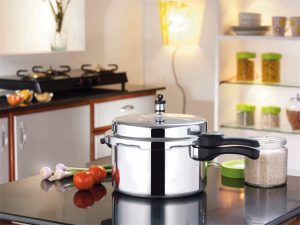
A pressure cooker is a kitchen appliance that accelerates the cooking by reducing the time to prepare the curries and rice. Whether it’s a gas cooker or an electric one, a cooker does what it does best; that is helping you prepare your food well and prepare it fast.
Things to consider before buying a cooker
Your family size
The most important thing to consider before buying a pressure cooker is your family size. Depending upon the number of members of your family, you can choose the capacity of the cooker. Please refer to the table below to check what the experts suggest:
| Family Size | Recommended Cooker Capacity |
| Bachelors | 1 – 1.5 Liters |
| Couples and Nuclear Families | 3 – 5 Liters |
| Joint Families | 5 – 7.5 Liters |
Different types and their features
There are 3 major types of pressure cookers based on the material used: Aluminum pressure cooker, Stainless steel pressure cooker, and Hard Anodized pressure cooker. All these types have some advantages and limitations. Let’s take a look at what they have to offer.
| Aspect | Aluminum Pressure Cooker | Stainless Steel Pressure Cooker | Hard Anodized Pressure Cooker |
| Durability | Low | Moderate | High |
| Heat Conductivity | Good | Not Good | Good |
| Price | Less | More | More |
| Corrosion Resistant | No | Yes | Yes |
| Stain-free | No | Yes | Yes |
2.4. Toaster & Sandwich maker
A toaster is a kitchen appliance that provides you with a piece of freshness in the morning with crisp toast. It helps you sort your healthy breakfast within a minute or two while you get ready for the day. A toaster is a familiar device in most modern households. Here is how you find the best toaster for your daily breakfast meals:
Choose the right type
The types you can choose from are the pop-up toaster and sandwich maker. The sandwich maker can be a toast or a grill one. You can have more than one type of toaster at your home according to your needs.
Pop-up Toaster

There are two of the most popular pop-up toasters for domestic usage: 2 slots and 4 slots. The toasters generally come with different toast (or brown) levels. The time taken to toast depends upon the levels of toast you require. The price range of pop-up toasters can be from Rs.800 to Rs.20,000 depending upon the brand, the slots available, and the features, but you can get decent options under Rs.5,000. Apart from considering the slots and toast levels, also keep an eye on the ease of cleaning associated with a toaster.
Sandwich Maker
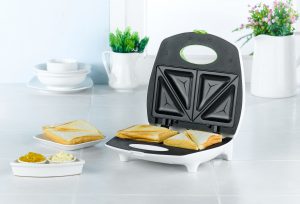
A sandwich maker can be manual as well as electric. A manual toaster generally comes with a single slot in which you can put on pair of bread with stuffing. However, the electric model comes with more than one slot. Most domestic use sandwich makers come with 2 slots of bread pair. These are generally easy to clean and maintain. The sandwich makers also come with an indicator light that lets you know if the sandwich-making process is complete. The manual sandwich makers start at a price of Rs.200 and come well within Rs.1,000. Electric models however start from just above Rs.1,000 and can cost you up to Rs.15,000 depending upon the different brands.
Griller
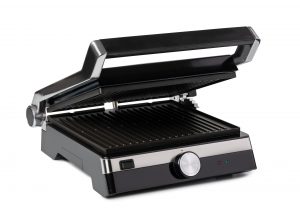
A grill sandwich maker is generally used in eateries and cafes, but if you grilled sandwiches over cold ones, you can get it for your kitchen as well. These models are generally in the higher price range and can cost you anywhere between Rs.1,500 to Rs.15,000 depending upon the brand and size. The griller evenly grills the bread and gives you a perfect breakfast or evening snack. The bigger models can hold bigger pieces of bread.
Also look for
When choosing a toaster or a sandwich maker for your kitchen, you should also consider the following:
- Durability
- Automatic turn-off
- High-lift lid (in case of sandwich makers)
- Ease of use
- Ease of cleaning
2.5. Induction

If you don’t prefer the traditional gas stoves, you can go for the way of the heating with the help of electricity offered by induction stoves. This easy-to-maintain and simple-to-use option is gaining popularity among students and bachelors. In recent times, even smaller families are showing interest in this kitchen appliance. Moreover, the new-age modular kitchen design lovers are also choosing this option over the traditional gas stoves for its sleek design and the value it adds to the aesthetics of the kitchen. If you’re deciding to get one for your kitchen as a backup or the main stove, please consider the following before you proceed:
Wattage
Wattage or power rate is something that defines the cooking time in an induction stove. The higher the power rate, the faster your dish gets prepared. The general range of an induction stove power rate is 1,500 to 2,000W.
Preset menu
One of the biggest advantages that an induction stove has over traditional gas stoves is the preset menu. A mid to high-end model comes with different preset menu options like stir fry, slow cooking, boiling milk, etc. that define the cooking duration automatically and save your energy and time.
Timer
Another notable benefit of an induction stove is that it doesn’t require you to always stand near it to monitor the cooking. You can set a timer and the cooking will automatically stop when the set duration is reached. This feature helps in cooking easier and more conveniently.
Portability
The ease of transport associated with the induction stove also makes it as popular as it is today. If you are moving to a new house or switching cities, the induction stove; a standalone device doesn’t take up too much of your space.
Price
An induction stove’s price depends upon the brand, number of plates (burners), and the features it offers. One plate induction stove can cost you as low as Rs.1,500 and you can get a decent number of options well under Rs.5,000. However, the higher-end models with 3-4 plates can cost you around Rs.30,000.
Maintenance
The cost of higher-end induction stoves might be a bit on the higher side, but you must also consider the fact that it is a one-time investment. The induction stoves require low maintenance, work efficiently on energy, and are easy to clean. Also, unlike the gas stoves, you are not required to refill the fuel cylinder every month.
Safety
One of the biggest concerns of people setting up their kitchen with gas stoves is safety. But with an induction stove, there is no need to worry as there is low to no risk of fire as there is no fuel associated with its usage. Also, some models come with a feature that automatically detects when the pan gets lifted off from it and it stops the heating right at that moment. If you’re planning to buy an induction stove, this is a feature you should definitely look for.
3. The Support
3.1. Chimney
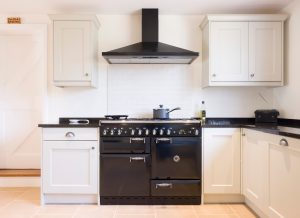
While you prepare your food, your kitchen area must stay hygienic and clean enough for you to focus entirely on the food preparation. The chimney is the device that sucks in the excess smoke and fumes from your cooking. It just doesn’t keep your kitchen smoke-free, but also adds to the beauty of your kitchen. Let’s take a look at the factors upon which your chimney buying process depends upon.
Type
The three major types of chimneys based on the placement are Wall-mounted Chimney, Built-in Chimney, and Island Chimney. The working mechanism does not differ too much in these models. The only difference is the appearance. You can choose the one that goes best with your kitchen setup.
Wall-mounted Chimney

A wall-mounted chimney is placed adjacent to the wall next to the stove. This is one of the most popular chimneys available in the market.
Built-in Chimney
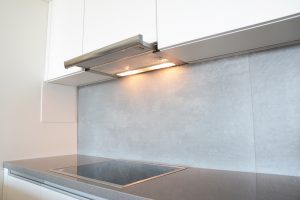
In most modular kitchen set-ups, you can find the built-in chimney type. This chimney is most popular among the people living in studio apartments and high-end residential houses.
Island Chimney

This standalone chimney is also drawing a lot of attention from people who love an open-plan kitchen. In this chimney, the hob is located in the middle of the kitchen and hangs from the ceiling above your cooktop.
Filter type
The chimney can also be classified on the basis of the filter type used. Based on this classification, there are 3 types of filters: Cassette filter, Carbon filter, and Baffle filter. Let’s take a look at how these filter materials are different and what they offer so you can choose the best one for your kitchen.
| Aspect | Cassette Filter | Carbon Filter | Baffle Filter |
| Material | Multiple layers of aluminum mesh | Charcoal slate with holes | Multiple stainless steel curved panel |
| Durability | Moderate | Less | High |
| Ideal for Indian Kitchen | No | Yes | Yes |
| Functionality | Aluminum mesh catches oil particles and grease from smoke | Holes between carbon slate absorb oil particles and grease from smoke | Curves in stainless steel catches oil particles and grease from smoke |
| Price | Low | High | High |
| Maintenance and Cleaning | Difficult | Cannot be washed or cleaned; has to be replaced in 3-4 months | Moderate |
| Noise | More | More | Moderate |
Size
It is very important to choose the right size chimney because many buyers think that chimneys are “one-size-fits-all”. However, that is not the case. For different types of kitchens, the sizes of chimneys also differ. Not only the kitchen type, but the size of your chimney also depends upon the cooktop size and the area available for installation. The chimney should cover the entire face of the stove/cooktop for it to extract all the smoke and oil particles. The hood of the chimney should be at least the size of your stove, preferably bigger. Also, the distance between the stove and chimney ideally should be from 65 to 75 cm.

| Stove/Cooktop Size | Recommended Chimney Size |
| 2 to 4 Burners | 60cm Chimney |
| 3 to 5 Burners | 90cm Chimney |
Duct vs ductless
A chimney without a duct recirculates air in the kitchen after pushing the smoke out of the house whereas a chimney with a duct extracts the smoke and oil particles out of the kitchen. To decide on which one you should buy, refer to the table below:
| Aspect | Ductless Chimney | Chimney with Duct |
| Working Mechanism | Filters smoke and recirculates air in the kitchen | Extracts smoke with the air outside the kitchen through an exhaust |
| Suction Power | Low | High |
| Filter Type | Charcoal (Carbon) filter along with baffle or cassette filter | Baffle or cassette filter |
| Efficiency | Less; does not remove heat from kitchen | High; exhausts heat, oil particles, and smoke out of the kitchen |
| Maintenance | Filters need to be regularly replaced | Needs to be washed only; no need to replace |
| Cost | Expensive | Inexpensive |
Suction Capacity
It is very easy to determine the ideal suction capacity of a chimney you would need for your kitchen. For instance, if your kitchen’s dimensions are 5mx4mx2.5m (Length, width, and height), just multiply all the dimensions by each other; in this case 5x4x2.5=50m^3(50 cubic meters). Now, multiply the volume of the kitchen by 10; that is 50m^3×10=500m^3. So the suction capacity of the chimney should be at least 500m^3/hour.
Cost
The cost of a chimney depends upon the size, brand, and features it offers. A 60-cm chimney can start from Rs.4,000 – Rs.5,000, whereas a chimney with a width of 90 cm or more can start from Rs.10,000. You can get a good chimney within the range of Rs.10,000 to Rs.20,000. If you want to go for chimneys with more features, it can cost you anything around Rs.30,000 to Rs.50,000. The higher-end models can be above Rs.1,00,000.
are Auto-clean chimneys good?
Yes. Auto-clean chimneys save your time and effort. This additional feature may cost you a bit more than the normal chimneys, but it is worth its price. Let’s take a look at what an auto-clean chimney can do better than a regular chimney.
| Feature | Normal Chimney | Auto-Clean Chimney |
| Oil Collector Present | No | Yes |
| Oil Clogging in Filters | Yes | No |
| Maintenance | Required to be clean regularly | Regular cleaning not required |
| Suction Power | Moderate | High |
| Lifespan | Moderate | High |
Features to look for
Your chimney buying decision mainly depends upon its ability to keep your kitchen clean, your budget, and its functionality, but there is no harm in checking these additional features:
- Detachable oil collector
- LED lights
- Soft-touch push buttons
- Buzzer or indicator
- Auto-heat sensor
- Soundproof kits
3.2.Purifier
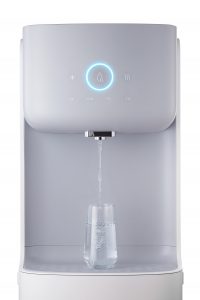
A water purifier is not just another kitchen appliance, it is a device that ensures a good health for you and your family. A water purifier protects you and your family from several waterborne diseases. A good water purifier is a necessity and we will help you understand the different types of water purifiers and thus help you choose the right one for your family’s needs.
First, what is your source of water?
Your choice of purifier technology largely depends upon the source of water you have. Different sources of water have different levels of TDS (Total Dissolved Solids). TDS means the amount of solid organic and inorganic solution present in the water. The main constituents of this solution are calcium, magnesium, potassium and sodium, carbonates, nitrates, bicarbonates, chlorides, sulfates, etc. TDS is calculated in PPM (parts per million). Based on the source, this is what the experts recommend:
| Water Source | TDS | Recommended Purifier Technology |
| Municipal Water (Lakes, Rivers, etc.) | Up to 200 PPM | UF, UV, UF + UV |
| Ground Water (Tube well, Borewell, etc.) | 200 – 2,000 PPM | RO, RO + UV |
| Multiple Sources (Municipal, tankers, tube wells, etc.) | More than 1,000 PPM | RO, RO + UV |
Second, choose the purifier type
We just saw the purifier technologies recommended for different types of water sources, but what do they mean, and what do they do? Let’s find out. Please note that you can choose a purifier that used one or more of the following technologies.
Reverse Osmosis (RO) Technology
Function: Uses a very fine semi-permeable membrane of 0.0001 microns.
Features:
- Reduces hardness of water
- Removes magnesium and calcium compounds
- Eliminates chemicals like arsenic, mercury, lead, and fluorides
UltraViolet (UV) Technology
Function: Kills or inhibits viruses and bacteria using intense ultraviolet rays.
Features:
- Suitable for low TDS water
- Does not eliminate dissolved impurities
- Recommended to be used with an activated carbon filter or existing pre-filters
Ultrafiltration (UF) technology (Gravity based)
Function: Uses gravity to settle the cyst down.
Features:
- No electricity consumption
- Does not eliminate dissolved impurities
- Suitable for water with low TDS levels
- Recommended to be used with an activated carbon filter or sediment filters
alkaline technology
Function: Filters based on pH levels.
Features:
- Removes harmful acids from water
- Suitable for water with low TDS levels
- Recommended for areas that have sour or acidic tasting water
electro-adsorption technology (EAT)
Function: Uses different levels of filters for removing different types of impurities in a 5-step process.
Features:
- Eliminates dust, dirt, silica, and suspended particles
- Eliminates germs, bacteria, cysts, and ion
- Eliminates harmful chemicals like chlorine, arsenic, lead, and pesticides
- Reduces water wastage
Third, the capacity
Once you decide exactly which technology to go with, it’s time for you to select the right capacity purifier. The size of a purifier tank depends upon the number of members in your family. Here is what the experts recommend:
| Family Size | Purifier Capacity |
| Bachelors and Couples | 4-5L |
| Nuclear Families (3-4 members) | 6-8L |
| Joint families (More than 5 members) | >10L |
And finally, the price
The final step and the most important is finding the one that fits right into your budget. Here is the price of different capacity purifiers:
| Purifier Capacity | Price |
| Up to 5L | Starting from Rs.4,000 |
| 5L – 14L | Rs.4,500 to Rs.35,000 |
| More than 14L | Rs.4,500 to Rs.40,000 |
Nowadays, you also get hot and cold purifiers that give cold and hot water directly. This feature is generally present only in the high-end segment.
4. The Storage
The preparation zone has been taken care of. The scrumptious meals have been served. Where do the leftovers go now? Right to the fridge. Welcome to the storage zone, the refrigerator that holds not just the leftovers, but also the raw ingredients for your food, the vegetables, raw meat, milk, eggs, water, as well as desserts. A refrigerator is an absolute must-have kitchen appliance and we’re going to go on a journey to find the best refrigerator for your kitchen now.
Fridge
Read our comprehensive refrigerator buying guide here.
5. The cleaning zone
The cooking and eating are done. It’s time now to clean. Although most of the families in our country prefer manual cleaning of utensils, but if you want to save efforts as well as time, you need to get your kitchen a dishwasher.
Dishwasher
Read our comprehensive dishwasher buying guide here.
Women belong in the kitchen. Men belong in the kitchen. We all belong in the kitchen. Because the kitchen is where all the magic happens. The magic of food. Kitchen, the birthplace of all the amazing meals, be it the breakfast, the lunch, dinner, a get together with your family and friends, the festive treats, the rainy season’s fritters and tea and millions of memories is that place of the house that is visited by the entire family on a daily basis.


